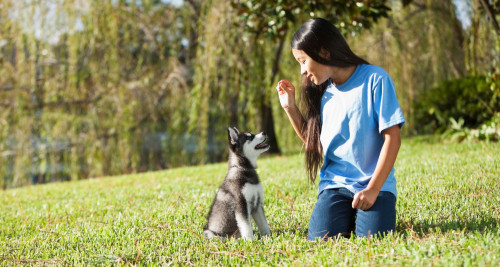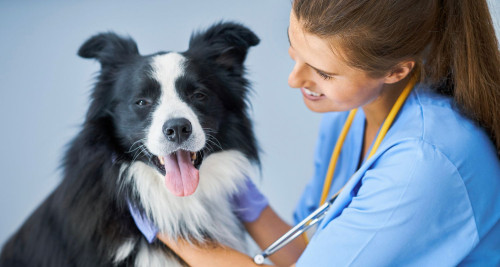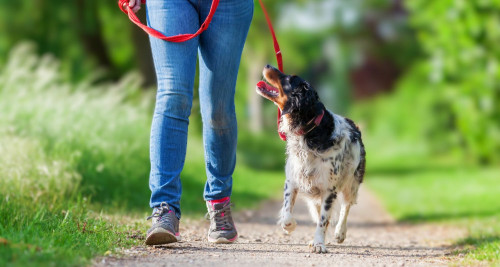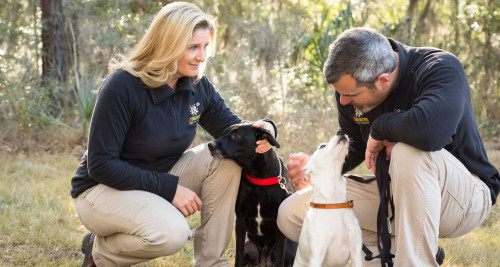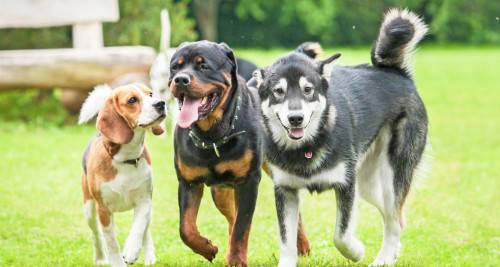Breed Traits and Characteristics
According to the American Kennel Club, here are some breed characteristic you can find in Yorkshire Terriers.
- Height
7-8 inches
- Weight
7 pounds
- Life Expectancy
11-15 years
- Coat Type/Length
Silky/Long
-
100 affectionate with family
-
100 good with young children
-
60 good with other dogs
-
80 trainability level
-
80 energy level
-
80 barking level
-
20 shedding level
-
20 drooling level
History
The Yorkshire Terrier originated in Yorkshire and parts of Lancashire in the north of England. In the middle of the 19th century, when work was plentiful in the north of England, many workers travelled down from Scotland to seek work in the Yorkshire clothing mills, bringing with them their own canine travel companions.
The Yorkshire Terrier is part of the terrier group, bred to deal with rat infestations in the clothing mills that abounded back in 19th century Yorkshire England. Many of these workers brought with them several different species of small terrier type dogs. It was the mixture of these dogs and the selective breeding that followed, that culminated in creating the dog we know today as the Yorkshire Terrier.
Established in North America
The Yorkshire Terrier was introduced in North America in 1872 and the first Yorkshire Terrier was registered with the American Kennel Club (AKC) in 1885. See also what the American Kennel Club says about this breed below.
The Yorkshire Terrier
This month’s breed is the diminutive sized dog with the heart of a lion –the Yorkshire Terrier. These little “pocket rockets” are a determined breed. They will always attempt to hold their own against any foe and always “punch above their weight” in the dog world.
Affectionately called a Yorkie, they are extremely popular with both lovers of small dogs and those who suffer allergies to dog dander, as the Yorkie does not shed. They may be small but they have big personalities like most of the terrier types. They don’t back down for anyone or anything and are much loved because of their determination, mistrust of strangers and a size that is manageable if you live in an apartment or condominium.
According to the American Kennel Club, Yorkies were named for the English county from which they originally hail. Yorkshire Terriers were used in the nineteenth century to catch rats in clothing mills. Surprisingly enough, in its beginnings, the Yorkie belonged to the working class, especially the weavers; in fact, facetious comments were often made about how the dogs' fine, silky coats were the ultimate product of the looms. Eventually, the breed left the workforce and became a companion animal to families of European high society.
Management
If considering this breed, you need to either possess a determined personality or a very tolerant one. The Yorkie will need management, especially when friends arrive, as they race to the door to see who is entering their den and if they approve.
They don’t need an abundance of exercise, but do love their walks. They should have regular controlled walks to help release some of their exuberance, but education and controlling their behavior on the walks works best.
The absolute worst thing you can do with your Yorkie is to try to pick it up to control it (something that the parents of small dogs commonly do). This type of action can lead to getting bitten or dogs running away to avoid the human hands. They love their family, but on their terms. They like to run the show and call all the shots.
They are one of those breeds that will have a favorite human in the household who they don’t like to let out of their sight. This usually makes someone in the household feel very special, but the reality is, the person they select is usually someone they can control.
This behavior definitely needs to be addressed or it can manifest into separation anxiety. Meaning, that barking and destruction could occur the moment you leave them alone. You also need to be sure that there is someone you can leave them with in an emergency.
In order to establish yourself as the “Top Dog”, you will need to provide a comfortable “time-out place” if you need to go to work or out for the evening.
In reality, you can’t spend 24/7 with your dog. For this reason, we recommend that you practice some good management of your Yorkshire Terrier for those times when you are not able to keep them actively engaged or have them close by or sitting on your lap. You will need to provide some kind of entertainment for them, something that keeps them busy and engages their brain. Be sure to pick an activity that does not over-excite the brain.
If you have a busy lifestyle, then consider day care or dog walkers. Always do your own research into the right people to care for your precious pet. Also check that they hold adequate insurance and have experience in dealing with this diminutive breed. Check out also what other breeds and the size of the breeds they might be walking at the same time.
Day care centers can solve management issues, but Yorkshire Terriers won’t always be a good fit for these facilities because of their personalities. So do your research first and make sure that the facility you choose understands your dog’s needs.
Yorkshire Terrier Breed Traits
Points of Interest
- Fearless and tenacious for their size
- Very cute
- Average weight is 7 pounds and 7 – 8 inches tall
- Not the easiest breed to train-but they tend to get away with a lot, due to their size
- Don’t shed but do need regular grooming and clipping
- Hair is silky like humans
- Controlling personality-but so cute that most humans don’t even notice it
- Confident personality and temperament
- Good family dog, but they will have their favorite family member
- Good with children when supervised
- Energetic but do not require a lot of exercise – short walk each day
- Energetic and athletic and always ready for fun
- Very protective of the family, can be aggressive and wary of strangers and other dogs
- Quintessential lap dog but must be on their terms
- Love toys and games
- Must be actively engaged regularly
- Highly intelligent, with a determined will of their own
- Barking issues are very high on this breed’s list of behavioral issues and not easy to fix without dedicated education and training.
Capabilities
This is a highly inquisitive breed that will be up for anything, so don’t let their tiny size fool you. They have a giant personality and they will be leading the pack if you allow them. They are capable of doing almost anything other breeds can do.
- Great dog for anyone who wants a small, energetic companion that does not shed.
- Lovable, lively companion, that can double as a lap dog.
- Capable of doing anything, but not always willing to please.
- Excellent watch dog
- Capable of performing tricks, highly intelligent, and competing in obedience and agility.
- Great indoor dog that can easily live in an apartment
- Great family dog, but will be more attached to one family member.
- Good travel companion, compact and easy to transport.
Personality & Temperament
The ideal Yorkshire Terrier character or "temperament/personality" is typically confident and outgoing, with an air of arrogance.
The Yorkshire Terrier is an active breed, protective, curious, and always seeking attention. They have a very stable personality and are mentally alert and emotionally secure. They are not your typical lap dog type, but quite willing to oblige when the urge takes them.
Yorkies will usually select one main person in the family to bond to and this is usually not the children. Therefore, very young children can be at risk of being snapped at and controlled by a Yorkie.
They make ideal companions for older families. In fact, many reputable breeders routinely only home them to families with children older than about 8-years-old.
Yorkshire Terriers are trainable as any dog, if they are not over-indulged and spoiled. If so, many Yorkie’s bark at the slightest noise. Although tiny, they have a giant ego and won’t toe the line unless there is a strong leader in the home.
They are a highly intelligent and agile. Originally bred to control rats, they developed a fearless temperament which can be found in their aggressiveness to other dogs. They are always on the lookout for adventure and maybe even a bit of trouble.
Training Your Yorkshire Terrier
If you feel you can train your own dog, you need to be mindful, that any type of training you wish to undertake, you need patience, direction and know-how.
We speak to many people who tell us that they started a training regime, only to find that this made their dog’s behavior worse and compacted the issues or they were told that their dog was beyond help.
There is no dog beyond help! When a young puppy comes to live with humans, it has come from a strong cohesive family group, a pack if you like.
Their mother has educated her puppies in the way of the dog. She is not teaching them the way of the human or how humans think and react because that will come from their new human family.
Bark Busters believes that dogs are predisposed and hard-wired at birth to want to belong to a social group that has a strong leader at its core. It’s what makes them feel secure, safe in their environment, and less anxious, knowing that their needs are going to be met.
There are several different types of dog training available, such as treat training or clicker training as well as other types that use force or pain.
Bark Busters training employs ‘communication’, praise and body language, aimed at emulating the way dog’s naturally communicate. We speak to dogs in a way they understand and they respond quickly. We train in the home and we teach owners how to ‘train their dog’s brain’ and to look for comprehension, cooperation and understanding from their dog. Why in home? Because this is where most problems occur, where a dog is most comfortable and able to focus.
We believe that hands should only be used to pet and praise the dog and that no dog should ever fear being touched by their owner’s hands.
Treats might be one way to make the experience a pleasant one and might achieve that goal, but many dogs either come and take the treat and run off or they don’t care because they are not hungry and their human’s requests are ignored.
Either way, the treats have their limitations and that type of training does not offer the complete answer for all dogs. They prefer to be able to use a few simple commands and have their dog stop in its tracks, return to them and actually love them for who they are, not what they are holding in their hand.
Yorkshire Terrier Common Behavioral Issues
We get lots of calls from the parents of Yorkshire Terriers, as they are prone to barking and controlling their family. They are high on the list of breeds that are barkers and control biters.
They have to know everything that is going on and control the whole household. They want to choose who enters the den and what they do while they are there.
Generally their size creates more tolerance from their family, but some doggie parents reach their wits end and cannot take it anymore.
Barking in the car, barking at people on bikes, and barking at passers-by, is high on the list of behavioral issues that Bark Busters training addresses with this breed.
Dogs do not have great discerning abilities. They see something whizzing past or hear a noise outside their home and it concerns them. The Yorkie barks to let anyone nearby know this is their territory and that they need to be on their way.
How to Stop Barking at Passers By
You can try limiting your dog’s exposure to windows and limit their access to front door areas, where there is more likelihood of them wanting to protect that area. Things like doggie doors or crates (dens) can assist you to control the barking.
Barking issues should always be addressed when they happen and preferably when your dog is not in an adrenalized state.
To address barking, you must catch your dog in the act and let them know, via communication that what they are doing is wrong.
You should never try to address any behaviour after the fact or try to punish your dog with smacks or threatening behaviour. This will only lead to other unwanted behaviour such as biting or aggression.
How to Stop Barking on the Walk
If you have adequately addressed barking issues indoors with success, you should be able to then transition that control outside. The big difference now will be the fact that your Yorkie will be on a leash and possibly feeling braver since you are along. Dogs also have a natural response known as ‘flight or fight’. When a dog is on a leash, it has no ‘flight’ option. We will qualify that by also saying that we have never seen a Yorkshire terrier ever run away from a fight.
Using obedience, with commands such as “sit” or “down” while on a walk, only serves to make your dog feel more vulnerable.
When your dog is barking at people or other dogs on the walk, you could try a flick of the leash to indicate to the dog that you are not pleased with his behaviour versus the approaching person or dog.
This might sound like a silly thing to say, but many dogs will increase their aggression if they feel that their human is backing them up. This stems from the human’s inability to correctly relay their feelings to the dog. Remember, your dog does not speak your language, it speaks dog!
You must have effective control in the home first, before you try to control your dog’s behavior when on the walk.
Connect with Us!
Need help training your Yorkie? Call 1-877-500-BARK (2275)or enter your zip code.
Bark Busters Trainer Donna Ryan on the Yorkshire Terrier
This month I have a great story to tell that involves a rescued Yorkshire Terrier that we named Chowzie. He went on to perform on stage and completed 14 performances for the Illawarra production of Gypsy the stage play in 1987.
We first encountered the Yorkshire Terrier in 1987 when my mom Sylvia Wilson (co-founder of Bark Busters) worked as manager of the RSPCA. She was asked by the local theatre group to train a Yorkshire Terrier for the stage play ‘Gypsy’. The little dog had very little to do on stage really, as its role in the play was just to be carried around throughout the whole performance. An easy role for a little dog you would think and an easy task for the trainers, Sylvia and Danny Wilson and myself.
The first job we faced was to find the right dog for the role and we knew it had to be a Yorkshire Terrier.
The RSPCA never and I repeat, never had a Yorkshire Terrier surrendered to the Illawarra shelter in the ten years that my mom had managed that shelter. This seemed like a daunting task, but still she put the wheels in motion.
She went next door to the dog pound and told the pound manager about the breed of dog she was looking for and asked him to keep an eye out for one.
He laughed at her, telling her that he felt this was a hopeless task. He told her that he had never seen a Yorkshire Terrier brought into the pound in his 20 years.
A week later the manager of the shelter came into her office to bring her some good news. He told her that he could not believe her luck, but a Yorkshire Terrier had just been brought in and she should come and officially put her name down for it. He went on to say that he really felt that it would be reclaimed and pointed out that the pure breed dogs are not the type of dogs that people abandon.
Sylvia put her name down and waited the obligatory 14 days.
But amazingly, after 14 days, no one claimed the little dog, so she went in to purchase him. She called him Chowzie, the same name as the dog in the play
That was the good news. The bad news was this little dog hated people and most of all hated being picked up. It was now becoming clear why no one had claimed him.
We had our work cut out for us. Mom sat with the little dog in his pen for about a half an hour, finally winning him over before attempting to place a collar and leash on him. The big work of training him to ‘like’ people and to cope with being carried around was ahead of us.
Over the next few weeks we spent time getting the staff to take turns at offering him treats while they carried him around. In no time he began to seek people out and almost begged to be picked up.
One day one of the kennel workers told Sylvia that when they let Chowzie into the exercise yard for a run, that it took them ages to capture him again. He flatly refused to come when they called him.
Sylvia asked the girl to let him out into the exercise yard again, so she could go and start some recall training with him.
This training was the start of what Bark Busters does today and consisted of vocal corrections and lots of praise, accompanied by the appropriate body language. If you want a dog to come when it’s called, you must lower your height and use an enticing voice. You must never chase him because that only serves to make the dog run more.
After about 10 minutes, Chowzie was coming to her every time she called. For safety she introduced a ‘stop’ command, which means; stop what you are doing and come straight back to me. All was achieved vocally and without touching or harming the dog in anyway.
That night Sylvia and Danny took Chowzie to his first rehearsal. My role in the training was going to be more involved in the stage performance, when we reached the actual on stage training.
Unbeknown to Danny and Sylvia, one of the girls had loosened Chowzie’s collar, as she felt it was too tight. As Danny went to get Chowzie out of the back of the car outside the rehearsal hall which was near a busy highway, he slipped out of his collar and headed off in the direction of the busy road. Unfortunately, a truck was fast approaching.
Sylvia desperately called out, “Chowzie come! Chowzie come!” He ignored her and kept right on going. She then remembered the ‘stop command’ she had taught him and called out “Bah’’, (the word she had programmed him to). He immediately stopped in his tracks and came back to her. She was convinced that if she had not carried out that little bit of training that day, that Chowzie would have been killed on that busy highway.
Chowzie completed 14 performances and won everyone’s heart. We found him a loving home after the show with a lady who lived on her own and wanted a real lap dog and we knew that Chowzie had become the quintessential lap dog, that would enrich this ladies’ life.
The moral of the story is that it is vital that you train your Yorkshire Terrier to ‘come when called’ and other obedience training. It could save his/her life, just like it saved Chowzie’s life that night.
Case Study: Aggressive Guarding
Lucy the Reluctant Doggie Day Care Guest
Lucy’s family told us that she was a well behaved dog when she was at home. She never barked, she came when called, she loved her family and loved nothing more than spending time with them.
The only problem was they all worked long hours and they felt terrible about leaving her alone all week long. So during one family meeting, they decided that she needed a play outlet and booked her into a nearby doggie day care center.
Her first day there was uneventful, but the next day and subsequent days, she became a big problem for the staff and management when she started to guard any toy or water bowl in the exercise pen. She would growl and snap at any dog or human that came near. This was causing a big disruption in the center.
The owner of the facility rang the family and was threatening to ban her completely. This worried her family, as then it would be back to leaving her alone all day. If they could not get this issue fixed, that was all that was available to them.
Bark Busters was called in to help fix her behavior.
We started Lucy’s training in the home as we knew that the root of the problem lied there. It was easy to see what was behind her behavior at the center. She was in complete control of her family at home and everyone avoided her when she had a toy, was eating, drinking or just anywhere there was an item she felt should be hers. This was a complete surprise but it was something they now had to face; she was not perfect.
We explained that the behavioral issues that she had at home, were all part of the issues she had at the day care. She needed education at home and it had to come from her family. They all adored her, but they were way too tolerant of her antics. If they wanted to stop her behavior at the center, they needed to educate her at home, letting her know what was right and what was wrong.
Lucy was a great student and she caught on to the “resource guarding” training very quickly. The family took a bit longer while they identified what she did at home that needed addressing.
We helped them through the process by first helping them create a list of do’s and don’ts. Then we set about showing them how to address them in a way that Lucy would understand.
Once her bad behavior had ceased at home (with the owner’s approval), we arranged a meeting with the doggie day care management to explain how to address her behavior at the center. In no time Lucy was their favorite guest.
Footnote: Many humans will tolerate behavior at home because they feel it harms no one. They do not see how allowing their dog to get away with behaving badly in the home, can be detrimental to their well-being psychologically. A dog that has no leadership or direction is going to feel vulnerable and will want to act out. All dogs, regardless of their breed or mixed heritage, need education and leadership to keep them healthy and happy.
Yorkshire Terrier Health
Common Illnesses and Injuries
Your Yorkshire Terrier’s health concerns will change over the course of their life. A puppy might be more prone to a leg fracture while they’re still developing, a 2-year-old Yorkie may be more likely to show signs of dental disease, and a senior Yorkie is far more likely to develop arthritis as they age. Yorkshire Terriers also have personality and physical traits that may make them more prone to certain conditions—a bold Yorkie that leaps off the couch or porch to run around the yard may be more prone to rupturing their knee ligament.
At any stage of life, here are some of the most common injuries and illnesses you should be aware of when bringing home a Yorkshire Terrier:
- Allergies
- Dental disease
- Heart disease
- Eye problems
- Diabetes
- Luxating patella
- Masses
If you are ever concerned about your dog’s health, your local veterinarian is a great resource—no matter how small the question.
Genetic Health Concerns
Like many popular breeds, the Yorkshire Terrier has its fair share of hereditary based issues, like luxating patella. Most reputable breeders now have their breeding stock checked and scored for these hereditary ailments by a vet. You can request proof that the puppy you are purchasing comes from parents that have been checked for these issues. Because many other health issues are also hereditary, you should do some research on the ancestry of your puppy and any health issues of that particular breed.
